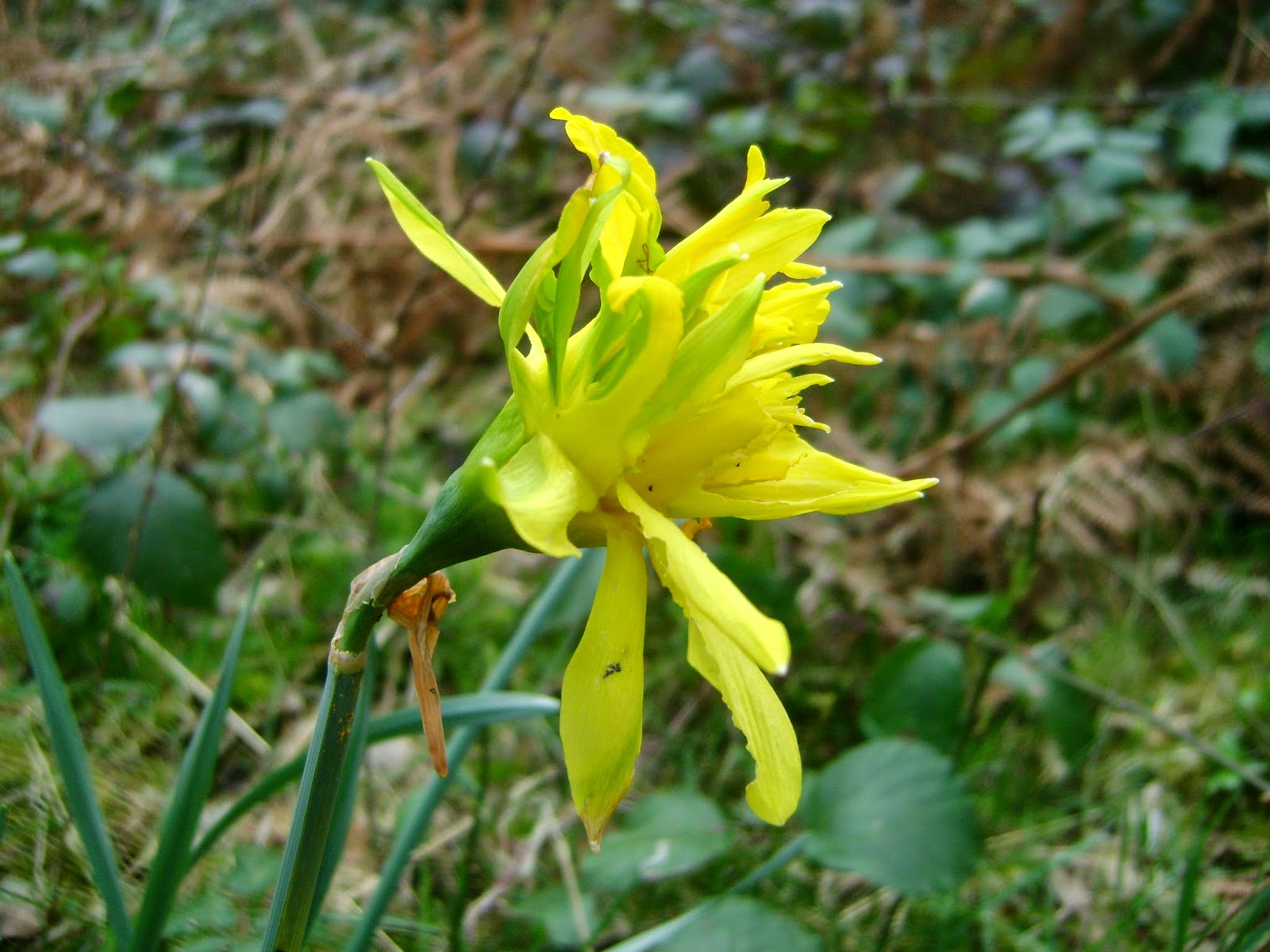I went for a walk this afternoon, up along the old mineral line that runs approximately north-south between Horeb and Cynheidre near Llanelli. This is now a Sustrans cycle track but it was originally built to service the once-burgeoning coal industry in SE Carmarthenshire - in fact it is the oldest such track in Britain (click on photo below to read).
Of course, my visit was entomological rather than historical, and I had two main aims - to check for orange underwings above birches and secondly to do a `recce` in preparation for some marsh fritillary survey work that I want to undertake in the summer. I only saw a single orange underwing, in spite of the frequency of birch, but they are a fickle moth to find and they may even be `over` at this site - or the slightly indifferent and blustery conditions keep them immobile. I wonder where they lurk when not flying on dull days or in rain -perhaps lower down on the ground and relying on their camouflaged hind-wings?
In the 1970s and 1980s, I would often visit this general area north of Horeb, and I would either walk the long distance from home along the still functioning rail track or, more latterly, simply drive to the hamlet of Horeb (named after its eponymous chapel). The fields north of Horeb were botanically rich and consequently supported a diverse butterfly and moth assemblage. A dairy note from 19.7.1983 for example, listed Myrica gale, Cirsium dissectum, Pedicularis palustris, Hypericum elodes, Genista anglica, Narthecium ossifragum, Potentilla palustris, Osmunda regalis and Lysimachia vulgaris amongst the `quality plants` and many marbled whites and a very late marsh fritillary.
But today, I was horrified at what I saw - much has been agriculturally improved (and not recently, by the look of it) or has reverted to scrub:
The first photo above shows an enclosure that I remembered as open and grazed and with a rich wildlife assemblage, whilst the second (on the western side of the railway) shows an area that was actually already abandoned before my visits of 25+ years ago, but within this wet carr woodland, one could see the former field boundaries. The higher ground in the distance of the first photo is Mynydd Sylen, now mostly all `nitrogen-green` fields where once was heath; indeed I remember heathland with chats, cuckoos and butterflies even in 1980. How rich in wildlife these farmed areas must have been in the past!
I`ll still be returning this summer to see if pockets remain that may suitable for fritillaries, but I`m not too optimistic. The sad thing is that this change has also happened at other coalfield pastures of my youth - between and south of Five Roads-Rehoboth, for example.
Some singing willow warblers, chiffchaffs and blackcaps cheered me up, as did a solitary clump of the so-called `Derwydd Daffodil` in the tiny, abandoned and brambly Horeb Chapel graveyard and a photo is shown below. I apologise for the disproportionate lack of `moth talk` in this particular blog, but the original aim of my walk was lepidological! An account on the Derwydd daffodil can be found in the Transactions of the Carmarthenshire Antiquarian & Field Club of 1907, for those who are interested. It occurred to me that, like the once-thriving coal industry and thronged chapels, the rhos pastures and marsh fritillaries of SE Carmarthenshire have also seen better days.





Orange Underwings evidently do come down to lower levels sometimes - Huw John's 2013 records included 6 OUs in Pembrey Country Park on 2nd April 2013, including "2 seen basking and photographed". Lucky chap!!
ReplyDeleteThe Horeb site was one of the old Marsh Frit sites I checked in 2012. I didn't find a single plant of Succisa - clearly it's been abandoned for quite some time.
ReplyDeleteI found another diary entry last night - for 22.11.1988, the last time I`d visited this area. The long list of good plants listed above were from an area that I noted in my later diary entry was `now ripped apart for peat extraction`, but the other pastures were still ok in 1988. However, I went on to comment, `these pastures are almost totally ungrazed now`. So, there were problems even back in 1988.
ReplyDeleteI noticed yesterday that there has been some attempt at clearance of the scrubby pastures and I`ll find out more when I visit in summer. The peat extraction area (and other fields) later changed hands and a fishery is now established on the old peat workings; the owner is friendly.
Trapped at home last night - a poor catch of only a few common species.
I`ve remembered some other `on the ground` orange underwing records: the late RAD Hughes had one alongside a path in the Pysgotwr area some years ago and Clive Jones more recently saw one on a path at WWT Penclacwydd; finally, many years ago Mark Pavett also had one on a path (outside Carms) at Aberdare that he caught in his cap. One day, perhaps I`ll see one on the ground too!
ReplyDelete